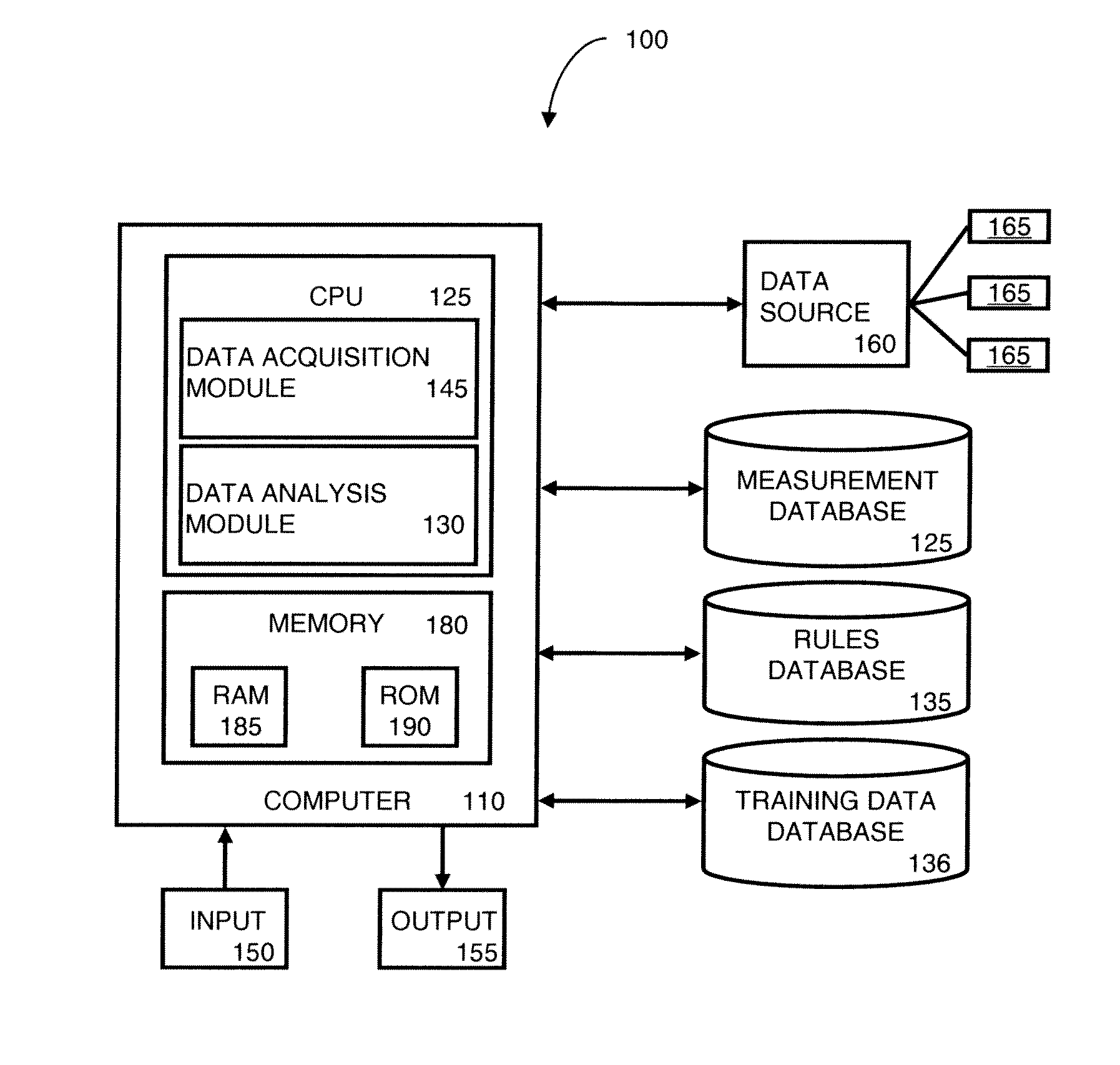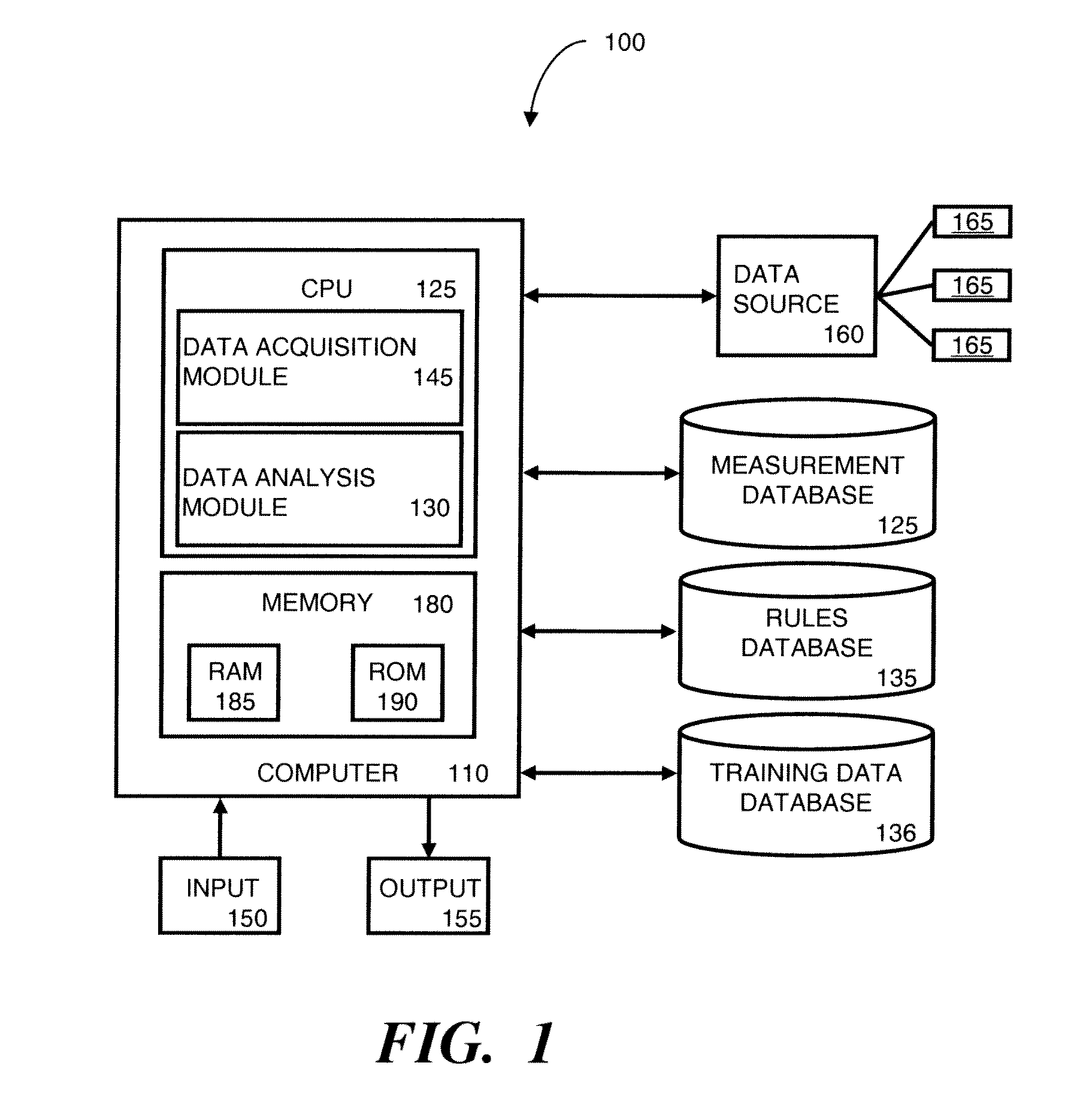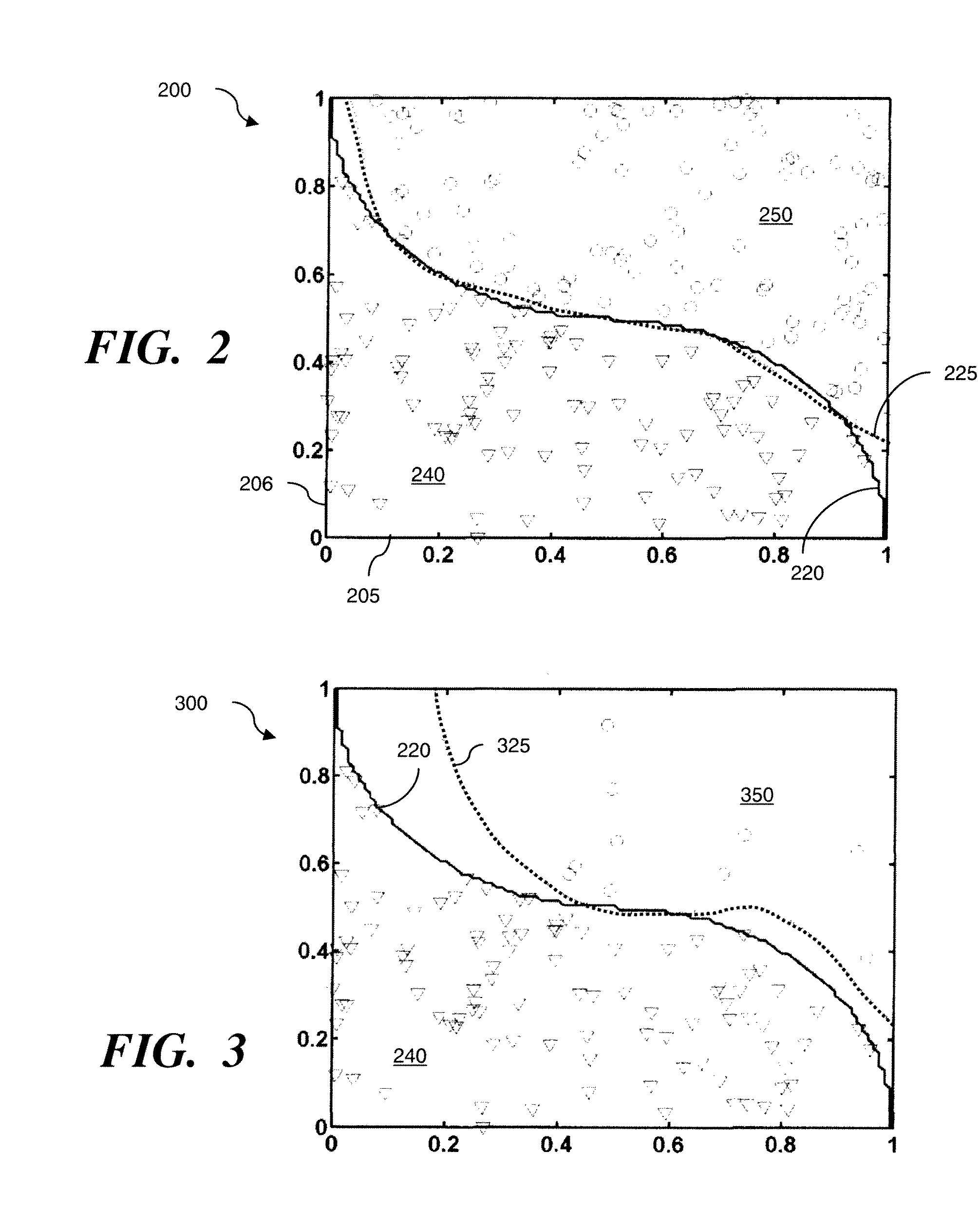Supervised fault learning using rule-generated samples for machine condition monitoring
a fault learning and machine condition technology, applied in the field of machine condition monitoring, can solve the problems of easy implementation of approaches, inability to provide the best efficiency, and inability to design accurate rules, etc., and achieve the effect of avoiding errors, avoiding errors, and avoiding errors
- Summary
- Abstract
- Description
- Claims
- Application Information
AI Technical Summary
Benefits of technology
Problems solved by technology
Method used
Image
Examples
Embodiment Construction
[0025]A machine monitoring system 100 for collecting and processing machine monitoring data according to an exemplary embodiment of the present invention is illustrated in FIG. 1. In the system 100, a computer 110 performs steps of the disclosed method together with other tasks. While a single computer 110 is shown, one skilled in the art will recognize that the disclosed steps may be performed by a plurality of computers linked by a network or a bus.
[0026]The computer 110 receives data from a plurality of sensors 165 that may be connected to the computer through one or more data sources 160 such as data loggers. The sensors 165 are arranged to simultaneously acquire data to create a vector representing the condition of a machine at a given point in time. The raw sensor data may be processed or combined, and is stored in a measurement database 125, along with timestamps or other temporal identifiers or indexes.
[0027]The computer 110, which may be a portable or laptop computer or a m...
PUM
 Login to View More
Login to View More Abstract
Description
Claims
Application Information
 Login to View More
Login to View More - R&D
- Intellectual Property
- Life Sciences
- Materials
- Tech Scout
- Unparalleled Data Quality
- Higher Quality Content
- 60% Fewer Hallucinations
Browse by: Latest US Patents, China's latest patents, Technical Efficacy Thesaurus, Application Domain, Technology Topic, Popular Technical Reports.
© 2025 PatSnap. All rights reserved.Legal|Privacy policy|Modern Slavery Act Transparency Statement|Sitemap|About US| Contact US: help@patsnap.com



